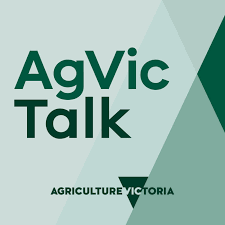Podcasts are now a recognised and accepted way to reach rural audiences. As online connectivity has improved and rural audiences have become much more familiar with using online resources for sourcing information, it has become much more effective as a means for extending information.
Podcasts are an audio recording that is available online for either downloading to an internet compatible device or for streaming direct from the internet. It is like listening to an online radio programme, on a particular topic or theme.
Podcasts can be an important source of information for Extension Professionals and they are also now a key opportunity for use as an extension tool.
You can access a podcast direct from a web page via a link or you can subscribe via an app, so that you are updated when new episodes are available. Key apps are Google Play (for Android devices), Spotify (for any device) and Apple Podcast (for Apple devices).
Many radio programmes are recorded and made available as a podcast, but importantly many organisations and individuals develop and deliver stand-alone podcasts on their Podcast Channels.
Example Podcast Channels
Some good examples of Podcast channels that are servicing rural audiences are:
AgriFutures On Air – Which is the official podcast channel of AgriFutures Australia which releases weekly episodes for rural and remote Australia on agricultural trends and innovations, latest research outcomes and insights into new and emerging rural industries.
AgVic Talk – This is the official podcast channel for Agriculture Victoria and is aimed at delivering information to farmers and agricultural professionals in a format that suits them.
Developing a podcast
You will need to develop a process that works for you and your extension needs. A podcast can be developed by as simply as using a smart phone and microphone, but typically you will need a more sophisticated approach; however it may not need to be much more. Use the steps below as a good guide to help get started.
Step 1
Be clear on what you are seeking to achieve and what the goals are for the podcast. This may start with a needs analysis and a podcast may be part of a suite approach to an extension program or project.
Step 2
Hardware and software: You will need a microphone and if you are doing a two person podcast and using more than one microphone, you will need an audio interface that will convert the microphone signals into a format for your computer and software.
To make edits or adjustments to your recording you will need some software. An example is Audacity, which is a free option. But research options that will best meet your needs.
You will need a Podcast hosting platform. The platform will store your podcast recordings and will setup a feed for your podcast. There are a range of free and fee for service options, you will need to research which one best meets your needs.
Step 3
Chose a topic, a presenter or subject to interview and write an outline for your podcast. Don’t heavily script it, but have it so that it can be presented naturally.
Step 4
Choose a good place to record, a quiet larger space, without too many hard, reflective surfaces will work well.
Step 5
Record and don’t worry about making mistakes, most mistakes will be able to be edited out.
Step 6
Edit, save and upload your podcast.
- You can insert introductions and do voice overs, you can also insert a conclusion and any call to actions. You may also like to add some background music or sound effects.
- Create artwork for your podcast cover that people will see when they use their podcast provider.
- Write a description for your podcast that will be seen by users on their podcast provider.
- Pick the right category and sub categories for your podcast.
- Get your podcast listed in podcast directories.
Step 7
Launch and promote your podcast. Importantly use networks and advocates to promote for you.
Step 8
Review your podcast and plan and develop the next.


